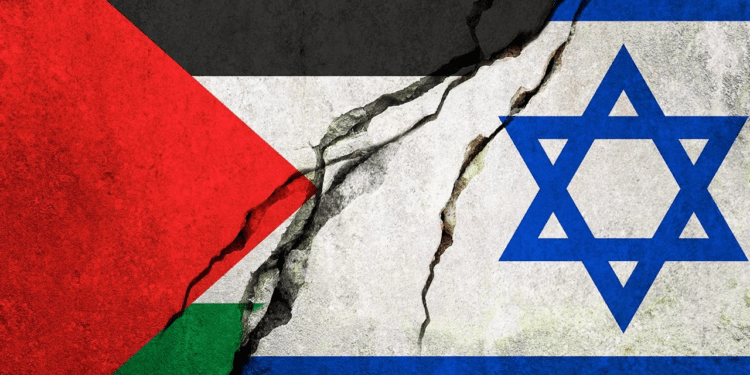Contents
Questo articolo è disponibile anche in:
We conclude our excursus through the “short century” in the Holy Land with the last two main military events of the 20th century between Israel and the Arab world: the first Lebanon War and the First Intifada. After the Six Day War and Yom Kippur one, the Palestinian resistance continued in neighboring states, provoking Israeli military intervention in Lebanon.
All against all: Lebanon War
The Israeli invasion of Lebanon in 1982 was the consequence of a long series of precursors. First of all, Lebanon had become the new operational base of the Palestine Liberation Organization (PLO). It had moved to southern Lebanon following Black September 1970, the month in which the Jordanian king Husayn proceeded with the liquidation of the Palestinian refugees within his kingdom’s borders.
This action was quite bloody and its legitimacy was justified by the king by claiming that Palestinian groups were plotting to overthrow him. The PLO had therefore reorganized itself also thanks to Syrian support and had created various military structures with an anti-Israeli function. In 1975, Lebanon fell into a bloody civil war that pitted Christian factions against Muslim ones. Syria had intervened in 1976 to stop clashes between communities in Lebanon and this had aroused fears among the Israeli elite.

Damascus could have favored the rise of a Lebanese government subject to Syrian wishes, opening the possibility of an invasion of Israel on a broader front. This assumption was fully embraced by the first Likud government in history, led by Menachem Begin, who intended to follow a “hawkish” policy towards the PLO. In 1978, following a Palestinian attack in Israel, the Jews launched “Operation Litani” to destroy Palestinian infrastructure in southern Lebanon.
During the military actions, Israel established the South Lebanon Army. It had a strong pro-Israeli imprint and was made up of soldiers of the Christian faith. This brought Tel Aviv closer to the Lebanese Forces led by the Maronite Bashir Gemayel. He was an important political figure, who rose to lead the Christians of Beirut with the outbreak of the civil war. Gemayel had shown himself partially open to an agreement with Israel, albeit with a certain distrust.
Meanwhile, the second Likud government that came to power in 1981 demonstrated even more strongly belligerent tendencies. Minister of Defense Ariel Sharon considered a war with the PLO and Syria inevitable and intended to exploit this to increase Israeli geopolitical weight in the entire Middle Eastern area. Israel and the PLO began a major skirmish in June 1981 that would soon turn into a full-blown war.
Gemayel and Tel Aviv had meanwhile outlined a common plan of attack. The invasion officially began on June 6th 1982, code-named “Operation Peace in Galilee”. The Jewish goals were quite ambitious: expel the Palestinians from Lebanon; establish a Maronite government led by Gemayel; expel Syrian troops; annihilate the Palestinians in the West Bank and Gaza Strip once and for all. These great objectives were, however, soon a resounding failure.

The Lebanese Forces failed to link up with the Israeli forces and Gemayel refused to carry out the total liquidation of the PLO as previously agreed. The Maronite knew well that Israel could be a much worse enemy than the Palestinians and did not intend to trust. The IDF tirelessly continued its operations and laid siege to Beirut on July 1. The siege ended on August 22 with the evacuation of the Palestinian guerrillas and the transfer of PLO headquarters to Tunis. Gemayel had courageously managed to win the elections on August 23 even without Jewish support, but his success was temporary as a terrorist attack killed him on September 14th.
Israel now found itself embroiled in a pointless conflict, within a country in turmoil and with the Palestinians who had simply moved out. Tel Aviv tried to find a way to disengage its troops from the Lebanese capital as quickly as possible and only succeeded in doing so in 1984. The IDF abandoned Beirut, but continued to occupy southern Lebanon until 2000.
The military intervention had not brought about any tangible results, other than further exacerbating Palestinian resistance in the West Bank and Gaza. Furthermore, the Israeli offensive had pushed groups of Shiite Muslims to found the Party of God (Hezbollah) which aimed to expel Israeli troops from southern Lebanon. Hezbollah would later strengthen even after the withdrawal of the IDF in 2000 thanks to the profuse support of Iran. But the problems caused by this military adventure did not end there. Another hornet’s nest would soon explode in territories closer to the heart of the Jewish state.
From the First Intifada to the Oslo Accords
A constant in the Arab-Israeli conflict since the 1948 war is that Palestinians are missing among the main actors. They were not protagonists, but almost “extras” in a clash that had for decades taken the form of a conflict for and not of Palestine. This had also caused disagreements within the Arab world, which can be summed up in the tragic days of Black September 1970.
The Palestinians understood the need to form a uniquely Palestinian entity, aimed at ensuring that Palestine became a real player in the war for the liberation of its native soil. This came with the creation of the aforementioned Palestine Liberation Organization (PLO) in 1967 on Nasser’s advice. But this was not just the birth of an acronym, but of a new practice of action which also included terrorist attacks in Europe to bring the Palestinian question to the fore.
The Lebanon War was also a watershed for renewed Jewish violence against Palestinian communities in the West Bank and Gaza. It was also due to this that the First Intifada broke out with great violence in December 1987. The PLO was now well organized in its new headquarters in Tunisia and the Palestinians were now tired of the harassment to which they had been subjected since 1967.
The intifada showed the Palestinians in the eyes of the world no longer as terrorists, but as women and children intent on opposing an immeasurably more powerful regime of deportation and repression. The people of Palestine engaged in four years of civil disobedience with strikes, demonstrations, boycotts of Israeli products and refusal to pay taxes.
It is precisely during these turbulent years of insurrection that the Islamist movement of Hamas (Harakat al-Muqawama al-Islamiyya) saw the light. Hamas was born from the pain of the Palestinian people oppressed by the Israeli army in the Gaza Strip. Forced to live in inhumane sanitary conditions, constantly pushed to resist forced displacement and the violent actions of Jewish soldiers, almost every Gazan family had lost a loved one in the Israeli-Palestinian dispute.
Here the Islamic revanchism of Hamas found fertile ground. Every boy in Gaza felt he could avenge his loved ones and fellow countrymen by joining the Hamas units, with the dream of liberating the whole of Palestine. The effect of the intifada was to restore the green line of ’49 and give courage to the Palestinian people. Tel Aviv also soon had to face the awareness of the impossibility of maintaining military occupation for a long time. The “iron fist” policy, in fact, did nothing but add fuel to the fire.
This impasse, together with the first Gulf War, initiated the first real détente in the Middle East between Israel and the Arab world. A key figure in this process was charismatic Yasser Arafat, leader of the PLO. In 1988, in the midst of the intifada, he had affirmed Israel’s right to coexist with Palestine. According to Arafat, the solution to the unsolvable conflict would have been the creation of two independent states based on the 1967 model.

The Jewish government appeared to be skeptical of such an agreement, but attitudes changed when the Likud party was replaced in 1992 by a new Labor government led by Yitzhak Rabin. This led to the 1993 Oslo Accords, signed by Rabin and Arafat on September 13 on the lawn of the White House. These agreements represented the starting point for subsequent treaties that would more precisely establish the relationship between a free State of Palestine and Israel.
Mutual recognition between the two states, the election of a Palestinian Legislative Council and the hint of a subsequent withdrawal of the Israeli army was established. In 1994 the negotiations continued with the Cairo Agreement which indicated clear instructions for the withdrawal of troops from Palestine, the transfer of power to the Palestinian National Authority (PNA) and the Palestinian police. Topics such as elections, security, economic relations and the release of prisoners were postponed to future consultations.
Meanwhile, Jordan joined this climate of understanding by stipulating a real peace treaty in October 1994 with the State of Israel. Lebanon and Syria, however, were much more reluctant to recognize the Zionist entity also by virtue of the never-ceasing occupation of the Golan Heights by Tel Aviv troops. This delicate process of normalization did not last long. The assassination of Prime Minister Rabin on November 5th 1995 completely turned the tables.

The Likud party regained power again in 1996, this time led by Benjamin Netanyahu, who is currently still in power. The subsequent Hebron and Wye agreements, in fact, were never actually implemented. This resulted in a renewed assertive policy on the part of Israel which exacerbated the conflict. Hamas denounced the PA for the corruption of its officials and accused it of treason for having started negotiations with the Zionists. The new century opened with the Second Intifada and the second Israeli invasion of Lebanon in 2008, whose consequences are the basis of the current events at the end of 2023.
The Arab-Israeli question still remains one of the great unsolved problems of international relations today. Despite countless conflicts and attempts at pacification, the conflict has festered, becoming something ontologically unsolvable. It followed the evolution of global scenarios, from the clash between the Axis and the Allies, up to the dawn of the Chinese century and the spread of a multipolar world.
We could dare to say that its conclusion can only come about with a radical upheaval of the world order established in Yalta back in 1945. On the other hand, it is known that every complex system presents its Gordian knots in its essence. Only a sword blow, Alexander the Great docet, will probably be able to definitively cut these knots.
For the second part, click here.
For the first part, click here.
Stay up to date by following us on Telegram and Instagram!



















